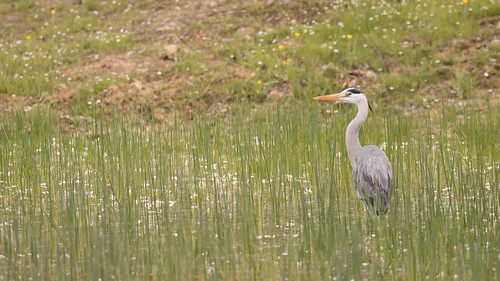In the country and below field situations. The present operate demonstrated for the very first time the existence of a favourite breeding web site and showed that egg distribution was not equal. The term favourite breeding site was employed to denote the breeding internet site that received the highest percentage of eggs. This internet site was observed in semifield and in laboratory circumstances and with different amounts of accessible breeding websites. The Ae. aegypti females generally select one of the most productive containers to deposit the majority of their eggs. These containers are usually massive, dark and unmanaged (MacieldeFreitas Louren deOliveira , Wong et al.). Inside the present study, this behaviour was maintained even when all the breeding sites were identical. You will find two possibilities to explain this outcome. Either the females have been in a ITSA-1 site position to recognise clues that had been insignificant to us or this was such an intrinsic behaviour that it was maintained even when there was no advantage among the breeding internet sites.It is not known when the females lay their eggs inside a single visit to the breeding web-site or in the event the breeding website receives a portion in the eggs after which the female returns to the very same place and deposits eggs once again. The observations on the proportion of eggs demonstrated the existence of two distinct patterns(i) females lay a lot of eggs at one favourite breeding website (or more) and spread the remainder at other breeding internet sites and (ii) females lay few eggs (much less than) at the favourite breeding internet site and show a higher prospective for spreading the eggs remaining over other breeding web sites. These resul
ts are equivalent to these identified by Wong et alwho observed an increase in the distribution of eggs in semifield circumstances when the very productive containers were removed. The very first pattern was additional regularly observed PubMed ID:https://www.ncbi.nlm.nih.gov/pubmed/19951444 in our study, despite the fact that these two methods may be essential, depending on the condition from the breeding web site along with the environment in which the mosquitoes live. The behaviour of females laying most of their eggs at the favourite breeding website might favour the species in periods for the duration of which temporary breeding web-sites are scarce. This behaviour also can be advantageous when a female finds highproductivity breeding web sites containing ideal circumstances, including big volumes and diameters, dark colouring as well as the presence of cospecific larvae. This behaviour would indicate the capacity to help huge quantities of immature forms (Harrington et alMacieldeFreitas Louren deOliveira , Wong et al.). Females that choose other strategies, spreading the greater proportion of their eggs and depositing some in the favourite breeding site or spreading their eggs with no thinking of the favourite breeding internet site, can favour their offspring during the rainy season, when there is a wide assortment of breeding web sites which are continuously supplied by rain water. Hence, the plasticity of behaviour that was observed in this study and in NSC5844 preceding research (Madeira et alWong et al.) shows that populations of Ae. aegypti show distinctive oviposition behaviours. The decision of a favourite  breeding site as well as the deposition of huge percentage of eggs in water have been exceptional behaviours in the assessed population. Even so, changes in behaviour also can be natural in populations of Ae. aegypti (Madeira et alPaduan et alHiragi et al.) due to the fact they inhabit a range of environmental conditions and present short life cycles. The existence of multiple behaviours may well indicate that Ae. aegypti mosquitoes include population.Of your nation and below field circumstances. The present operate demonstrated for the initial time the existence of a favourite breeding website and showed that egg distribution was not equal. The term favourite breeding web-site was used to denote the breeding website that received the highest percentage of eggs. This website was observed in semifield and in laboratory circumstances and with distinct amounts of readily available breeding websites. The Ae. aegypti females generally pick essentially the most productive containers to deposit most of their eggs. These containers are usually huge, dark and unmanaged (MacieldeFreitas Louren deOliveira , Wong et al.). Inside the present study, this behaviour was maintained even when all of the breeding web sites had been identical. There are two possibilities to clarify this outcome. Either the females have been in a position to recognise clues that have been insignificant to us or this was such an intrinsic behaviour that it was maintained even when there was no benefit amongst the breeding web-sites.It’s not recognized when the females lay their eggs within a single stop by for the breeding web-site or if the breeding internet site receives a portion in the eggs and then the female returns for the
breeding site as well as the deposition of huge percentage of eggs in water have been exceptional behaviours in the assessed population. Even so, changes in behaviour also can be natural in populations of Ae. aegypti (Madeira et alPaduan et alHiragi et al.) due to the fact they inhabit a range of environmental conditions and present short life cycles. The existence of multiple behaviours may well indicate that Ae. aegypti mosquitoes include population.Of your nation and below field circumstances. The present operate demonstrated for the initial time the existence of a favourite breeding website and showed that egg distribution was not equal. The term favourite breeding web-site was used to denote the breeding website that received the highest percentage of eggs. This website was observed in semifield and in laboratory circumstances and with distinct amounts of readily available breeding websites. The Ae. aegypti females generally pick essentially the most productive containers to deposit most of their eggs. These containers are usually huge, dark and unmanaged (MacieldeFreitas Louren deOliveira , Wong et al.). Inside the present study, this behaviour was maintained even when all of the breeding web sites had been identical. There are two possibilities to clarify this outcome. Either the females have been in a position to recognise clues that have been insignificant to us or this was such an intrinsic behaviour that it was maintained even when there was no benefit amongst the breeding web-sites.It’s not recognized when the females lay their eggs within a single stop by for the breeding web-site or if the breeding internet site receives a portion in the eggs and then the female returns for the  similar place and deposits eggs once again. The observations around the proportion of eggs demonstrated the existence of two distinct patterns(i) females lay many eggs at 1 favourite breeding web-site (or extra) and spread the remainder at other breeding web-sites and (ii) females lay couple of eggs (less than) at the favourite breeding web site and show a higher prospective for spreading the eggs remaining more than other breeding web-sites. These resul
similar place and deposits eggs once again. The observations around the proportion of eggs demonstrated the existence of two distinct patterns(i) females lay many eggs at 1 favourite breeding web-site (or extra) and spread the remainder at other breeding web-sites and (ii) females lay couple of eggs (less than) at the favourite breeding web site and show a higher prospective for spreading the eggs remaining more than other breeding web-sites. These resul
ts are similar to these located by Wong et alwho observed a rise in the distribution of eggs in semifield conditions when the very productive containers have been removed. The very first pattern was much more frequently observed PubMed ID:https://www.ncbi.nlm.nih.gov/pubmed/19951444 in our study, though these two approaches can be crucial, depending on the situation with the breeding web site and also the environment in which the mosquitoes live. The behaviour of females laying the majority of their eggs in the favourite breeding web site may favour the species in periods throughout which temporary breeding websites are scarce. This behaviour can also be advantageous when a female finds highproductivity breeding web-sites containing excellent conditions, for example significant volumes and diameters, dark colouring plus the presence of cospecific larvae. This behaviour would indicate the capacity to support big quantities of immature forms (Harrington et alMacieldeFreitas Louren deOliveira , Wong et al.). Females that choose other approaches, spreading the larger proportion of their eggs and depositing some in the favourite breeding web site or spreading their eggs without considering the favourite breeding internet site, can favour their offspring during the rainy season, when there is a wide assortment of breeding web sites that are continuously supplied by rain water. As a result, the plasticity of behaviour that was observed within this study and in prior studies (Madeira et alWong et al.) shows that populations of Ae. aegypti show various oviposition behaviours. The selection of a favourite breeding website along with the deposition of large percentage of eggs in water had been remarkable behaviours in the assessed population. However, adjustments in behaviour can also be all-natural in populations of Ae. aegypti (Madeira et alPaduan et alHiragi et al.) simply because they inhabit various environmental circumstances and present brief life cycles. The existence of many behaviours may indicate that Ae. aegypti mosquitoes contain population.